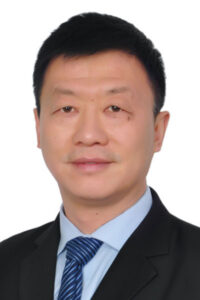Genomic analysis of single cells revolutionizes cancer research

Able to obtain millions of data point from individual cells, single-cell analysis achieves unprecedented scale and resolution. Researchers around the world are driving new technologies to resolve variations between induvial cells, recognize and define novel cell types and novel cell states, and identify often-rare cells and transitory states that drive disease initiation and progression to transform our understanding of cancer biology.
The American Association for Cancer Research and the Chinese Society of Clinical Oncology sponsored AACR-CSCO Joint Symposium: Changing the Landscape of Cancer Research and the related live panel session. Registrants can watch a replay of the session through June 21, 2021.
“The tumor microenvironment is the battlefield for immunotherapy,” said Zemin Zhang, PhD, Biomedical Pioneering Innovation Center, Peking University. “Single-cell sequencing is needed to understand the composition of the TME, the lineages, dynamics, interactions, and clinical relevance of different cell types.”
Single-cell RNA sequencing has revealed distinctive subsets of T cells in liver and other cancers. One subset shows clonal enrichment for infiltrating regulatory T cells with fewer exhausted CD8 T cells, the other subset shows fewer infiltrating Tregs and more exhausted CD8+ T cells. The relative ratios of these two T-cell types varies across different cancers with different clinical implications.
Cancer-specific myeloid cells also separate into two groups, dendritic cells and macrophages. In hepatocellular carcinoma, LAMP3+ dendritic cells are usually found inside the tumor but can migrate to lymph nodes and activate other T cells.
Colon cancer contains five subsets of macrophages, Zhang said, including two tumor-associated macrophages, or TAMs. The two TAM subtypes have different properties. CD1C macrophages favor tumor progression, while SPP1 macrophages favor tumor regression. CSF1R antibody treatment selectively depletes the SPP1 subtype.
“You are essentially getting rid of the good guys and keeping the bad guys with CSF1R,” he said. “This explains why the therapy has been ineffective.”
There are many other T cell-based immune types, Zhang said, all with different sensitivity and resistance to different therapeutic approaches. Immune cell sets and subsets vary widely across cancer types, which might account for the variability in tumor response to different treatments.
“Single-cell sequencing has helped us understand the patterns of immune cells, which could help advance development of new therapies and new therapeutic targets,” Zhang said. “We should consider these differences in immune cell populations when developing therapies.”
Single-cell sequencing is also starting to identify key links in tumor pathogenesis. Researchers have long recognized that certain high-grade pediatric gliomas occur in specific patterns of age, brain geography, and mutational landscape.

“The cellular context and transcriptional events leave footprints in the epigenetic states of the tumors that we can readily detect,” said Claudia L. Kleinman, PhD, McGill University and the Lady Davis Institute for Medical Research. “Tumor cell states often recapitulate developmental states but with aberrant changes.”
Single-cell techniques are helping build a high resolution blueprint of the developing mouse and human brain, Kleinman continued. Tumor cells can be mapped to this developmental reference, creating opportunities for early detection and possibly treatment.
Kleinman’s lab has identified developmental signatures for three pediatric gliomas, WNT medulloblastoma, embryonal tumors with multilayered rosettes (ETMRs), and H3G34R/V gliomas.
“Genetic alterations that impact very narrow developmental windows during differentiation of neural linages give rise to these tumors,” she said. “Cells are retained in a self-renewing, progenitor-like phenotype.”
